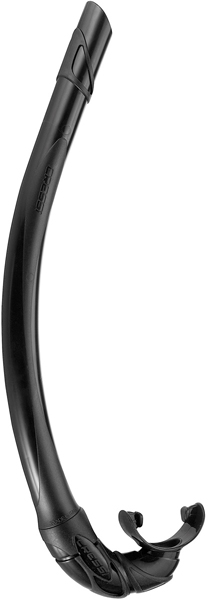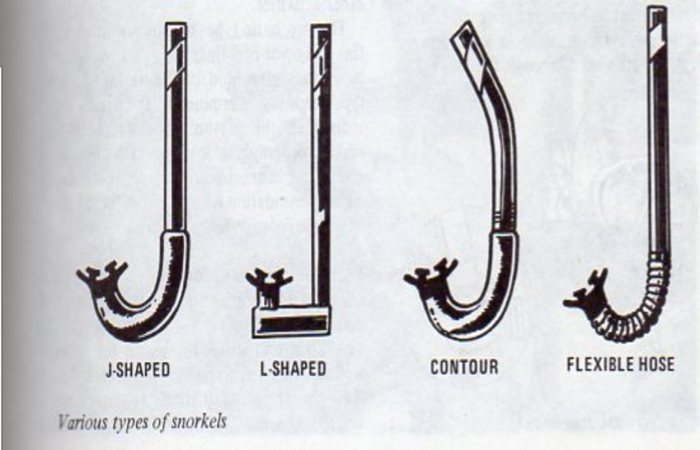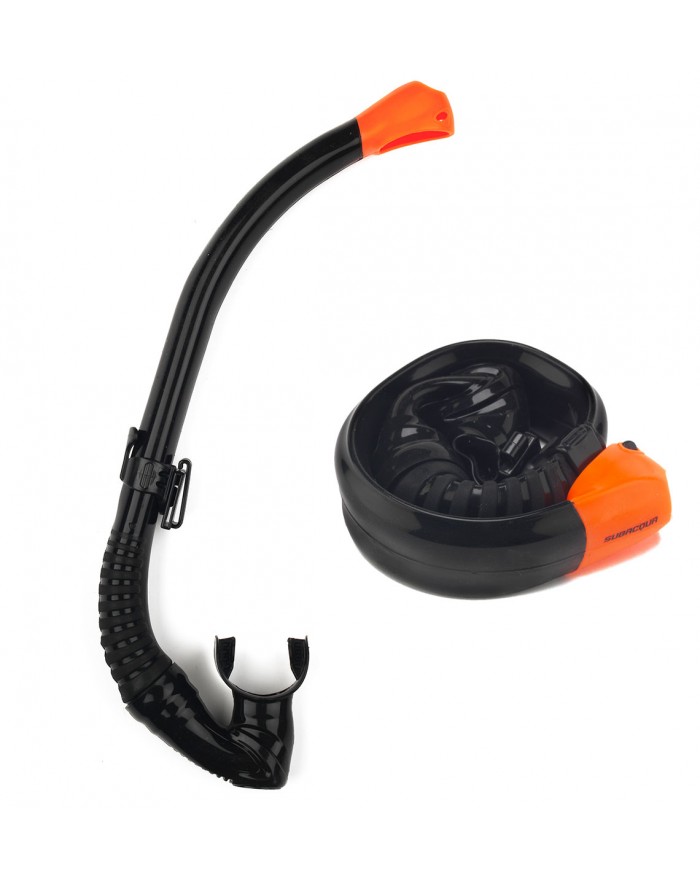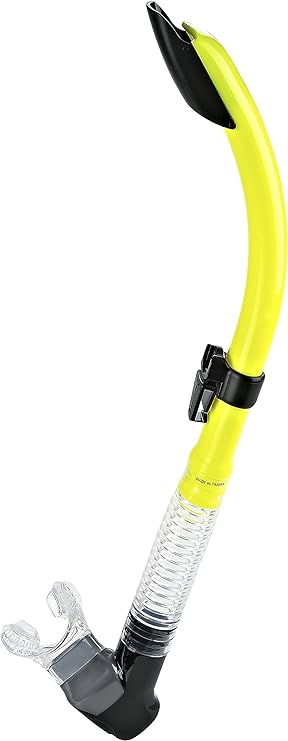This morning I decided to conduct a Google search with "snorkel types" as my search term. Among the results, five broad categories emerged for breathing tubes:
1. Traditional/Classic
2. Flexible
3. Dry
4. Semi-dry
5. Full-face
Let us look at each of these snorkel types in turn.
1. Traditional/Classic
The snorkel below is described in several online "snorkel guides" as an example of a "traditional" or "classic" snorkel. One or two even call it a "J-shaped" snorkel, when "C-shaped" seems a more appropriate description:
 So what about the following equally "classic" or "traditional" snorkels below, which may still be in production? They perfectly exemplify the "flexible-hose" snorkel, the "L-shaped" snorkel, the "contour" snorkel and the "J-shaped" snorkel from the illustration below in an early PADI manual. Each of these four types evolved to match different needs and priorities.
So what about the following equally "classic" or "traditional" snorkels below, which may still be in production? They perfectly exemplify the "flexible-hose" snorkel, the "L-shaped" snorkel, the "contour" snorkel and the "J-shaped" snorkel from the illustration below in an early PADI manual. Each of these four types evolved to match different needs and priorities.


Perhaps the wide-bore "contour"-type snorkel labelled as "classic" or "traditional" might be better designated as a "wet" snorkel to distinguish it from the dry or semi-dry variety. I'll take a critical look at the other four "types" in subsequent postings and then come up with a better set of types that might even amount to a coherent snorkel typology! Please feel free to contribute your own take on the matter.
1. Traditional/Classic
2. Flexible
3. Dry
4. Semi-dry
5. Full-face
Let us look at each of these snorkel types in turn.
1. Traditional/Classic
The snorkel below is described in several online "snorkel guides" as an example of a "traditional" or "classic" snorkel. One or two even call it a "J-shaped" snorkel, when "C-shaped" seems a more appropriate description:


Perhaps the wide-bore "contour"-type snorkel labelled as "classic" or "traditional" might be better designated as a "wet" snorkel to distinguish it from the dry or semi-dry variety. I'll take a critical look at the other four "types" in subsequent postings and then come up with a better set of types that might even amount to a coherent snorkel typology! Please feel free to contribute your own take on the matter.





